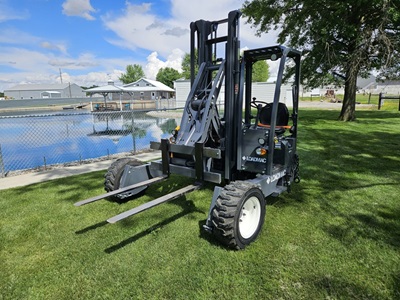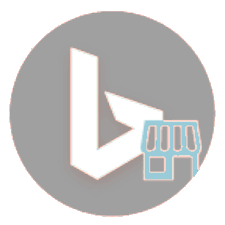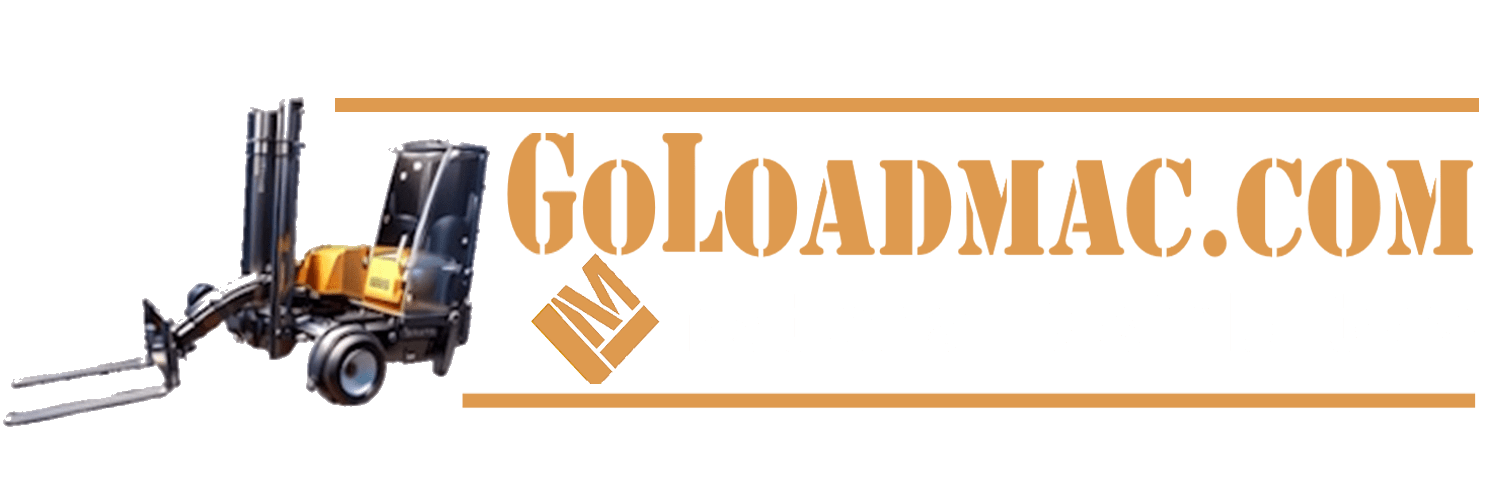Your cart is empty Continue Shopping
Is a Moffett the Same as a PiggyBack Forklift? Here’s the Real Difference, and Why it’s not a Moffett Piggyback Forklift
Searches for a “Moffett piggyback forklift” are more common than you’d think. The phrase blends two well-known names in the truck mounted forklift equipment world—but also reflects a common mix-up. Moffett and PiggyBack refer to separate brands, each with its own design and mounting systems. This isn’t just a trivia tidbit—it can affect your purchasing, maintenance, and fleet planning decisions.
Two Brands, One Mixed-Up Term
The phrase “Moffett piggyback forklift” has become a catch-all term. Since Moffett forklifts are so common, people often use the name to refer to any rear-mounted forklift. It’s shorthand, but not accurate. In fact, “PiggyBack” is a registered trademark held by Princeton, another forklift brand under the Hiab corporate umbrella. Moffett and Princeton are sister companies, but their machines are not interchangeable.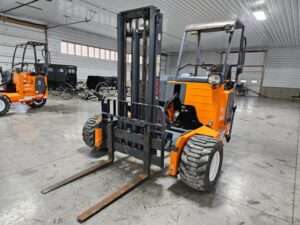
Pictured here is a used off lease Moffett M55, which can incorrectly be referred to as a Moffett Piggyback Forklift, when in reality, Piggyback Forklift™ is a trademark that refers to a Princeton forklift.
Moffett Stands on Its Own
Made by Hiab, Moffett forklifts are built for durability and performance. They’re widely used in construction, roofing supply, and other demanding delivery operations.- Models with 4-way steering for side-to-side movement
- Strong off-road performance
- Configurations tailored to flatbed delivery trucks
Princeton Puggyback Forklift
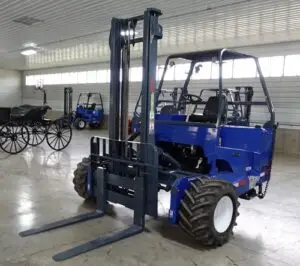
Princeton Forklifts: The Actual “PiggyBack” Brand
If you’re referring to a true “PiggyBack” forklift, that’s Princeton’s territory. These forklifts mount to the back of trucks like a Moffett does, but they use different systems and specs.- Their own mounting brackets
- Distinct control setup
- Brand-specific service requirements
When Accuracy Protects Your Wallet
Ordering parts for the wrong brand, misunderstanding a spec sheet, or misfitting a mounting kit isn’t just annoying—it can delay deliveries and increase downtime. Clear labeling helps avoid the kind of errors that cost time and money.
Using the right brand names keeps operations running smoothly. Moffett and Princeton also use different forklift lift mounting kits.
Moffett Forklift Mounting Kit
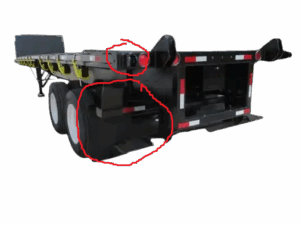
A Moffett® Forklift Mounting Kit includes two outer brackets that house a cross pin and securement chains. The forklift mounts by resting its tires against a set of front wheel pads and lower wheel pads beneath the tires. Once mounted, the forklift’s weight is primarily supported by these wheel pads, while the chains are tensioned to stabilize the unit and help secure it in place. Unlike the Princeton EZ Hitch™ system, Moffett’s design relies more heavily on both the wheel pads and chains to distribute and secure the load.
Princeton Piggyback Forklift Mounting Kit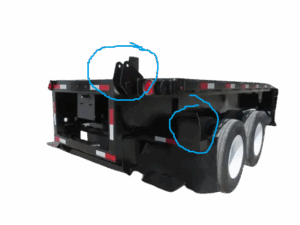
A Princeton PiggyBack® Forklift Mounting Kit includes two brackets with welded fixed pins. These pins are engaged by hooks mounted on the rear of the forklift frame. When the forklift is mounted, most of its weight is supported by these hooks and pins, with additional pressure transferred through the front wheel pads where the forklift’s tires rest against the truck or trailer. Unlike the Moffett® mounting system, Princeton’s design does not require bottom wheel pads. Very little weight is placed on the safety chains—they serve primarily as a backup restraint in case of mechanical failure. This mounting system is officially branded as the EZ Hitch™ by Princeton Delivery Systems.
Loadmac truck mounted forklifts use a standard mounting system that closely resembles the Moffett® design, utilizing wheel pads and chain tension to secure the unit during transport. Despite this similarity, Loadmac forklifts are engineered for versatility and can be easily configured to work with a wide range of mounting kits—including both the Princeton EZ Hitch™ system and virtually all other common setups on the market. Whether you’re mounting to trucks equipped for Donkey®, Palfinger®, Navigator®, or Chrisman forklifts, Loadmac can be adapted with minimal modification. This cross-compatibility makes Loadmac an ideal choice for fleets running mixed-brand forklift systems or businesses upgrading from legacy equipment.
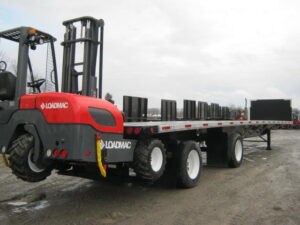
Why Loadmac is Worth a Look
For those exploring newer, more efficient machines, Loadmac is quickly gaining recognition. It’s built with modern delivery needs in mind—not legacy add-ons.
- Extended reach comes standard on the Loadmac 855—no upgrade required
- Weighs up to 2,200 lbs less than some Moffett 4-way models
- Safer mounting via rear controls (no climbing required)
- Offers both 2-way and 4-way steering models
Whether you’re delivering to construction sites or navigating tight urban spaces, Loadmac brings agility and dependability.
Clarity Leads to Smarter Choices
If you’re typing “Moffett piggyback forklift” into a search bar, pause for a second. You might mean a Moffett. Maybe a Princeton. Or maybe you’re ready to step up to something like Loadmac.
Getting the terminology right helps you land the machine that fits your job—not just the one you’ve heard about the most. At GoLoadmac.com, we’ll walk you through the differences and help you find what’s actually best for the way you work.
Disclaimer: Moffett®, Princeton®, and PiggyBack® are registered trademarks of Hiab. GoLoadmac.com is not affiliated with Hiab or any of its subsidiaries. Trademarks are used for reference purposes only.

